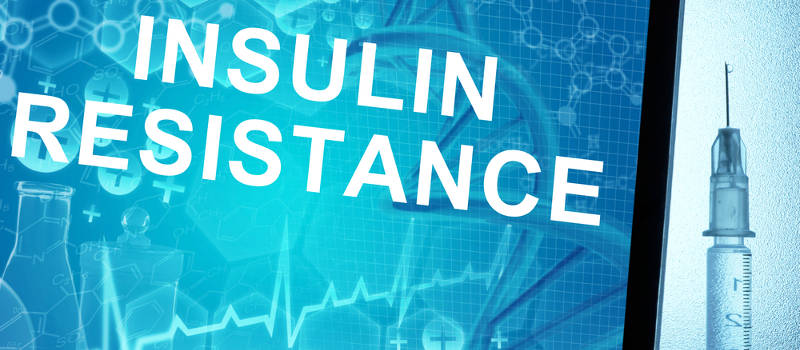What Exactly Is Insulin Resistance?

Insulin resistance happens when your body does not respond properly to your insulin hormones. Insulin resistance is one of the leading causes associated with type 2 diabetes, according to Dr. Erika Brutsaert at the Albert Einstein College of Medicine.
In this article, we’ll talk more about insulin resistance is and how it’s caused. We will also go over the symptoms and outline how it’s related to diabetes. The information is helpful to people with questions about type 1 or type 2 diabetes, as well as anyone diagnosed with prediabetes.
What is Insulin?
According to Healthline, insulin is a hormone which lets your body use glucose for energy. The insulin in your body gets made in a gland behind the stomach, called the pancreas. After eating, the digestive system turns consumed carbohydrates into glucose.
The glucose, which is a type of sugar found in most carbohydrates, gets absorbed into your bloodstream through the small intestine lining. Insulin helps absorb the glucose sugars into your body once it’s in the bloodstream, which gives you energy.
Insulin production also balances the glucose levels in your blood. If there is an excess amount of glucose in your bloodstream, the insulin tells your body to store it in your liver. The excess glucose gets released whenever your body needs extra energy.
What Causes Insulin Resistance?
People who are overweight or obese have a higher risk of developing insulin resistance, according to the UK Diabetes resource. In addition, those who have a diet which is high-calorie, high-carbohydrate, or high-sugar, also increase their chances of getting insulin resistance.
Chronic stress, sedentary lifestyle, and taking a high dosage of steroids for extended periods of time also lead to insulin resistance. People with insulin resistance have excess fat stored in their pancreas and liver, have high levels of insulin in their bloodstream, and also have inflammation.
What Are Symptoms of Insulin Resistance?
During the early stages of insulin resistance, people will show little to no signs of the disorder. As time passes, certain symptoms become more apparent as the blood sugar levels begin to rise.
If you are tired, lethargic, or have trouble concentrating, then you may be showing signs of insulin resistance. High blood pressure, high cholesterol levels, and extreme hunger are also symptoms. People who gain weight in their midsection and develop excess belly fat could have insulin resistance as well.
Insulin Resistance Related to Diabetes
People with insulin resistance are at a high risk of developing prediabetes and type 2 diabetes. Insulin resistance does not directly cause diabetes; however, prediabetes is often diagnosed to people who have insulin resistance.
There are over 86 million people in the United States ages 20 and older who have prediabetes, according to an estimate by the Centers for Disease Control and Prevention.
According to the American Heart Association, people with prediabetes are likely to develop diabetes within ten years of their initial diagnoses. These people are also at a higher risk for a stroke or heart attack. In extreme cases, diabetes also causes blindness, kidney failure, and amputations.
Treating Diabetes With Insulin
Insulin injections help treat people with type 1 and type 2 diabetes. People with type 1 diabetes cannot make insulin naturally, so they rely on injection treatments to regulate their blood glucose levels.
Not everyone with type 2 diabetes needs insulin injections. Certain lifestyle changes and oral medications can get the job done, but if these alternatives don’t work, then type 2 diabetics will need insulin injections as well.
The only way to administer insulin into the body is with an injection from a syringe, pen, or pump. Your health requirements, preference, and insurance plan will determine what kind of injection method you need to use.
You can give these injections to yourself after your doctor demonstrates and explains the proper instructions. The most common areas to inject insulin into your body include the stomach, arm, thigh, and rear end.
Different Types of Insulin
Although all types of insulin have the same effect on your body, there are variations in how fast they start working and how long they last. These variations are designed to replicate the natural insulin production your body produces throughout the day.
- Long-acting insulin – It takes up to two hours for long-acting insulin to start working after an injection. Once it activates in your system, it has the ability to last up to 24 hours.
- Short-acting insulin – Short-acting insulin starts working 30 to 60 minutes after an injection. You administer this dosage before eating a meal. It lasts for five to eight hours.
- Rapid-acting insulin – Rapid-acting insulin is also injected before meals. It only lasts for two to four hours, but it starts working about 15 minutes after an injection.
- Intermediate-acting insulin – It lasts for up to eight hours and starts working about 30 to 60 minutes after the injection.
The number of times per day you need to inject yourself with insulin depends on the type you take and your doctor’s recommendation based on your condition.
Side Effects of an Insulin Reaction
When your blood sugar levels drop too low due to the glucose in your blood falling below normal, you’ll experience some side effects. The medical term for this scenario is called hypoglycemia.
Hypoglycemia is more common in people with type 1 diabetes, but it can also affect people with type 2 diabetes as well. Some of the mild to moderate symptoms include sweat, blurred vision, dizziness, confusion, and loss of coordination, fatigue, nerves, irregular heartbeat, pale complexion, and headaches.
In severe cases of hypoglycemia, people become unable to eat or drink, have seizures, and fall unconscious. These are extremely dangerous and the reason why hypoglycemia needs to be treated immediately.
To treat an insulation reaction, you’ll need food or calories to balance the insulin levels. Over exerting yourself while exercising or not eating enough increase the chances of a hypoglycemic reaction.
